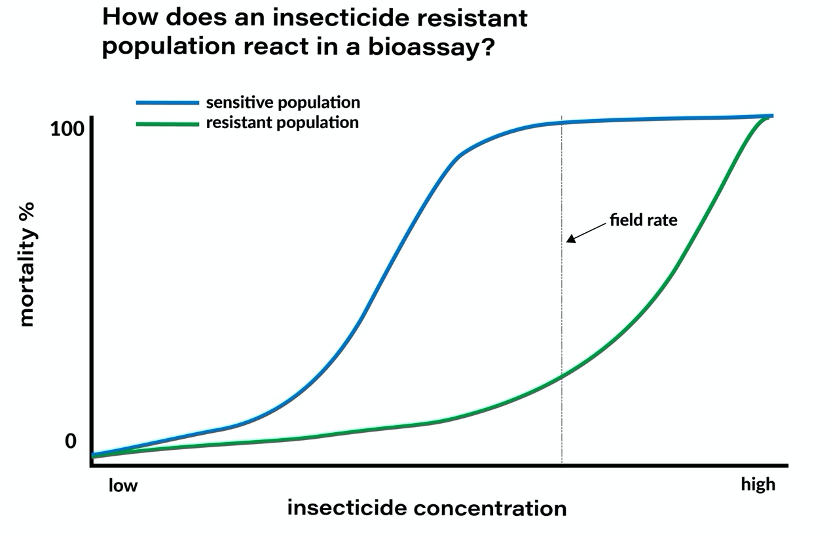Lucerne flea (Sminthurus viridis)can be found in most grain crops and pastures in southern Australia, with crops such as lucerne (hence the name!), clover and canola particularly susceptible to feeding damage. There are increasing concerns of pest species evolving resistance to insecticides, particularly very ubiquitous species like lucerne flea, which may be subjected to regular insecticide selection pressure even though it may not always be the target.
At cesar we have been looking into this and research so far indicates lucerne flea has not evolved resistance to insecticides. This is good news for growers who find lucerne flea in numbers that may warrant a spray treatment.
Testing for insecticide resistance in lucerne flea
cesar screened nine lucerne flea field populations in 2018 for resistance to omethoate and imidacloprid – two widely used insecticides in grain crops. Eight of these populations were collected from areas with a history of insecticide usage (in Victoria, NSW and Western Australia). One population sourced from Victoria had no history of insecticide usage. This population was used as a ‘sensitive’ control to which all other populations could be compared. Populations were collected from regions in Victoria, NSW and Western Australia.
Isn’t lucerne flea very small, making them hard to collect? Yes, they are! Luckily, we had some powerful help collecting these populations. We use a vacuum to gather large numbers directly from the field.
Once the samples were in our lab, our researchers performed bioassays to establish the baseline sensitivity of each population to omethoate and imidacloprid. This involved adding a specific insecticide solution into a vial, introducing adult lucerne flea into the vial and scoring how many die over a number of hours. This is performed for different insecticide concentrations until we have a complete picture of what concentrations cause mortality. This is a handy method of identifying resistance. For instance, if one population had evolved resistance, we would expect to see those lucerne flea survive at a higher concentration of insecticide. A schematic of how this works can be seen below. In previous bioassays for another pest – the redlegged earth mite (Halotydeus destructor) – resistant populations were found to have approximately 200,000 times the resistance of a susceptible population to synthetic pyrethroids!

Field populations of lucerne flea have not evolved organophosphate or neonicotinoid resistance
The results of the bioassays indicated that there is no resistance to either omethoate or imidacloprid in field populations of lucerne flea. However, it is important to note that although no evidence of organophosphate or neonicotinoid resistance was found, there is significant selection pressure for resistance evolution placed on lucerne flea in Australia from frequent use of insecticides. A 2019 GRDC report produced by cesar, in collaboration with SARDI and the Birchip Cropping Group, on Insecticide Resistance in the Southern Region lists lucerne flea as a pest that has a high risk of evolving insecticide resistance.
Curbing insecticide resistance in lucerne flea
To minimise the selection pressure placed on this pest and the risk of resistance evolving:
- Don’t use synthetic pyrethroids to manage lucerne flea – they have a natural high tolerance to this chemical group.
- Be mindful of using organophosphates, neonicotinoids and other insecticides when trying to control pests as off target effects may lead to resistance.
- Only apply chemicals when absolutely necessary and do not overuse them (stick to the label rate, but do not use the same active time after time).
- Avoid broadspectrum insecticides where possible. This will help to preserve beneficial natural enemies of lucerne flea e.g. snout mites
- Incorporate non-chemical, cultural controls methods such as grazing and broadleaf weed management
Acknowledgements
This work was led by Dr Aston Arthur (cesar), with financial support from the Grains Research & Development Corporation (UM00057). WA collections of lucerne flea were made by WA Department of Primary Industries and Regional Development. Project partners are CSIRO, the University of Melbourne, and the WA Department of Primary Industries and Regional Development.
Cover image: Photo by Andrew Weeks, Cesar Australia
